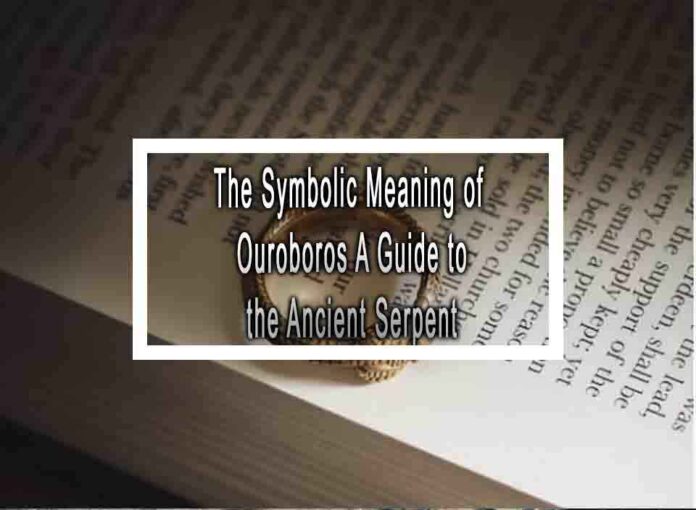The Ouroboros is a powerful and ancient symbol often depicted as a serpent or dragon eating its own tail. It appears in various cultures and holds diverse symbolic meanings, all of which revolve around themes of cyclicality, unity, and transformation. Here’s a guide to the symbolic meaning of the Ouroboros:
1. Cyclicality and Eternal Renewal:
- The most fundamental symbolism of the Ouroboros is the concept of cyclicality and eternal renewal. The serpent biting its own tail forms an unending circle, signifying the cyclical nature of life, death, and rebirth. It represents the eternal and continuous cycle of existence.

2. Unity and Wholeness:
- The Ouroboros symbolizes the idea of unity and the interconnectedness of all things. By forming a closed loop, it suggests that the universe is a unified and self-contained entity, where all elements are interconnected and part of the same cosmic whole.
3. Self-Reflection and Self-Generation:
- The act of the serpent consuming itself is symbolic of self-reflection and self-generation. It represents the idea that one can find completeness, wisdom, and enlightenment by looking inward and understanding oneself. It also suggests that creation and destruction are interdependent and part of the same process.
4. Transformation and Rebirth:
- The Ouroboros embodies the concept of transformation and rebirth. Just as the serpent sheds its old skin and emerges anew, the symbol suggests that individuals can undergo profound transformations and experiences of personal growth.
5. Alchemical Symbolism:
- In alchemy, the Ouroboros represents the prima materia, the formless, undifferentiated substance from which all creation arises. It is associated with the alchemical process of dissolution and the merging of opposites to achieve the philosopher’s stone, a symbol of spiritual enlightenment and immortality.
6. Cultural Variations:
- The Ouroboros has appeared in various cultures throughout history. In ancient Egyptian mythology, it was associated with the sun god Ra and represented the cycle of day and night.
- In Norse mythology, it was known as Jormungandr, the Midgard Serpent, and symbolized the cyclical nature of time and the world.
- In Gnosticism, the Ouroboros was seen as a symbol of the eternal cycle of birth, death, and rebirth within the material world.
7. Modern Interpretations:
- The Ouroboros continues to be a popular and evocative symbol in modern contexts, including art, literature, and popular culture. It often conveys themes of introspection, transformation, and the interconnectedness of all things.
In summary, the Ouroboros is a profound and enduring symbol that conveys essential truths about the cyclical nature of existence, unity, transformation, and the interconnectedness of all life. Its symbolism has resonated with various cultures and spiritual traditions throughout history, making it a timeless emblem of cosmic and philosophical significance.











